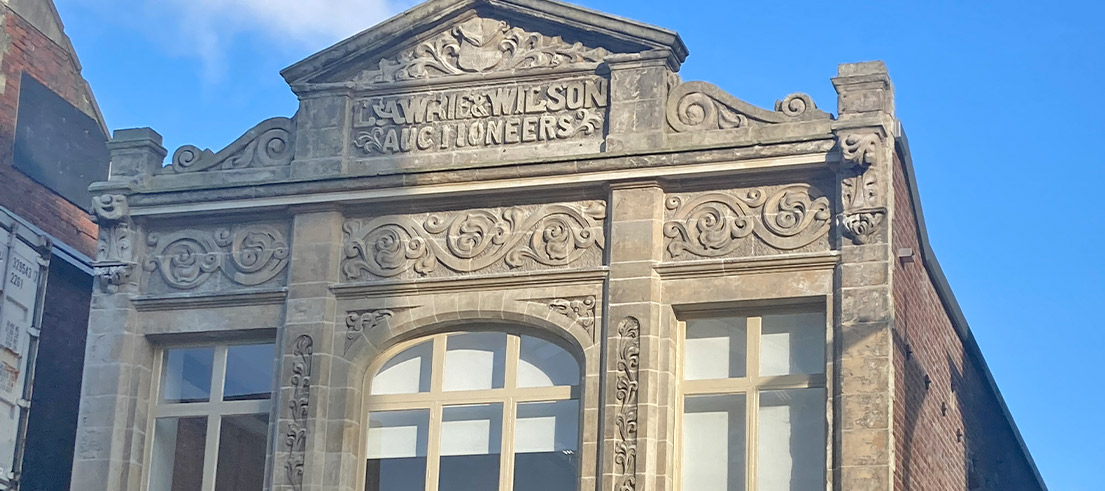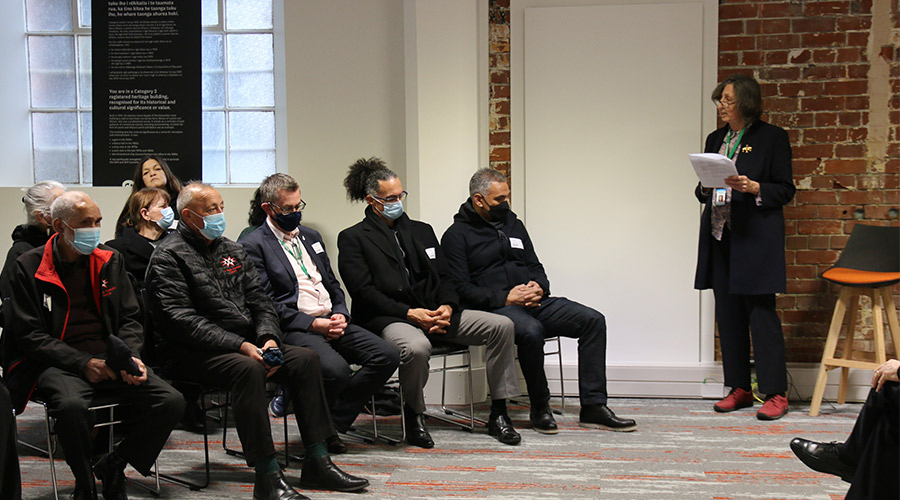
Christchurch heritage building restored and re-opened
The Lawrie and Wilson Auctioneers heritage building has been re-opened in a small ceremony, attended by representatives from Ngāi Tūāhiriri, Heritage New Zealand, Christchurch Civic Trust, Christchurch City Council, and other stakeholders alongside members of the project and construction team.
Located next door to our Tuam Street offices, the Lawrie and Wilson building was purchased by us in 2020.
Refurbishment of the building
Since then, the construction team has replaced the roof; the stone façade has been refurbished but kept intact; the ground floor external fire escape paths have been improved, and it has been earthquake-strengthened to 100 percent of the current Building Standard, which is the highest seismic standard rating.
The ground floor will be rented out to the new water services regulator for Aotearoa – Taumata Arowai. The first-floor space will be occupied by our staff.

Chair Jenny Hughey speaks at the opening with representatives from Te Ngāi Tūāhuriri. The team from Te Ngāi Tūāhuriri blessed the building and unveiled a tukutuku panel and whakairo (carving).
History of the building
The Lawrie and Wilson Auctioneers building is a Category 2 registered heritage site, recognised for its historical and cultural significance and value.
Messrs Lawrie and Wilson were established wholesale furniture manufacturers in Christchurch who used their knowledge of the furniture trade to set themselves up as auctioneers and land, estate and commission agents.
Architecturally, the Lawrie and Wilson Auctioneers building is one of the few remaining examples of a small Edwardian Baroque commercial premises in central Christchurch.
Detailed and visually attractive ornamental exteriors were a defining feature of Edwardian Baroque architecture, and this can be seen in the building's Oamaru stone façade which has been restored in keeping with its original characteristics.
It is said to have been carved by Harry Wilson of the Lawrie and Wilson firm, who was a professional carver.
"It is very fortunate that our Council was able to acquire this unique piece of our city's heritage and preserve it for future generations. The building has significance to central Christchurch as a place of trade, having hosted a colourful range of businesses, professions and groups over the last century. Many of the occupants have been manufacturers or tradesmen, including an upholsterer, leather merchants, sign writers and photography processing laboratories," Environment Canterbury Chair Jenny Hughey says.
Reflecting the central city location, the building also gained cultural significance as a venue for recreation and entertainment. It was:
- a gym in the 1940s
- a dance hall in the 1960s
- a pool club in the late 1970s and 1980s
- and the Christchurch City Council Parking Unit office in the 1990s.
Post-earthquake
The building sustained moderate damage in the 2010 and 2011 Canterbury earthquakes, with 1997 earthquake strengthening work preventing major structural damage.
The building was put on the colloquially named 'Dirty 30' list of Christchurch derelict buildings until we purchased it for restoration and repurposing.
"The story of preserving this building started in the 1990s when community heritage advocates fought to ensure it was restored by the Christchurch City Council, and then advocates had to struggle again during the post-earthquake period to ensure its survival. Fortunately, earlier earthquake strengthening meant the damage in the 2010 and 2011 quakes was at a level that allowed for restoration," Jenny said.
